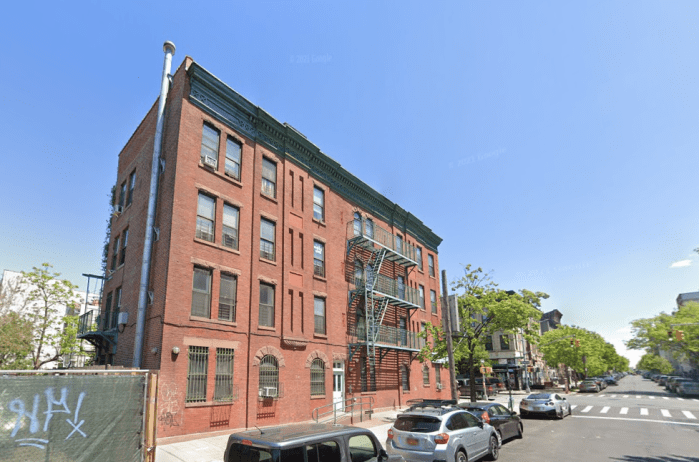
BY GERARD FLYNN | The East Village has seen a steady influx of chain stores and high-end restaurants over the last decade-plus, making it increasingly difficult for small business owners to compete. The newcomers’ clientele comes prowling for upscale products and, notably, nightlife.
While the East Village in the ’60s attracted artists seeking affordable housing, today it is luring a different kind of “creative type,” and tourists — driven less by a desire to be on the road than to enjoy a swanky apartment, preferably, in a shiny tower of metal and undulating glass.
Not that all of this is news to longtime residents, who have been complaining for years to Community Board 3 about noise, out-of-scale development and landlord harassment of rent-regulated tenants. The board heard even more about the issue last month, at its Economic Development Committee meeting, where Columbia University student planners shared the results of a study conducted early this year focusing on Alphabet City.
Drawing from an array of data, they found that, between the years 2000 and 2012, there was a significant demographic and retail shift, greatly reducing the neighborhood’s retail diversity.
The number of white residents in Alphabet City (bounded by Avenues A and D, and 14th and Houston Sts.) grew by more than 4,000, to 41,381, making up 67 percent of the neighborhood’s residents. Meanwhile, the black and Hispanic populations each dipped by several hundred, to 4,199 (or 7 percent of the total population) and 10,917 (18 percent), respectively. The area’s Asian population rose by more than 2,200 to 9,405 (or 15 percent of Alphabet City residents).
Median household income in the study area soared, on average by nearly 45 percent. At the turn of the millennium, it was just under $37,000. In 2012, it approached $62,000, students told the committee meeting.
Despite the issue’s purported urgency, however, turnout was low at the meeting, which drew few local community members.
In some census tracts in the study area — where radicals once screamed, “Die yuppie scum!” — the median household income jumped 100 percent to $144,821.
Mirroring the citywide affordability crisis, rent in the entire Community District 3 area (which also includes the Lower East Side), with a population of more than 163,000 residents, soared by an average of 42 percent during the study period, according to the report.
More startling perhaps was what the data showed about full-service restaurants and watering holes. In 2004, there were 248 food-services and drinking places in Alphabet City. By 2012, that number had ballooned to 514, significantly outpacing any other kind of business and increasing these businesses’ area “market share” to 32 percent.
Yet, Alphabet City’s number of bars has actually fluctuated, from 24 in 2004, up to a high of 80 in 2008, and back down to 59 in 2012. Meanwhile, full-service restaurants have simply exploded, from 175 in 2004 to 380 in 2012.
From 2004 to 2012, the number of laundries (non-coin-operated) and dry cleaners in the study area also grew, from 25 to 41. During the same period, beer, wine and liquor stores more than doubled, from seven to 17. And the amount of beauty salons tripled over those eight years, from 23 to 69 in 2012.
The data also added some weight to claims that city planners under former Mayor Bloomberg targeted the East Village as a “destination neighborhood” for tourists. This is a view with which Stacey Sutton — a Columbia urban planning professor and mentor to the students who did the report — somewhat agrees. A 2012 report prepared for C.B. 3 by Mary de Stefano, the board’s former planning fellow, reached a similar conclusion about the former mayor’s intentions.
The area’s food-services and drinking places drew in a hefty $200 million in 2012, according to the report. These were also far and away the area’s chief employers among types of businesses studied, with more than 6,100 workers, up from more than 5,200 in 2006.
Among the report’s findings: “There are an increasing number of bars and restaurants that cater to a nightlife not necessarily congruent with the lifestyle of nearby residents. … Increasingly, there are more establishments that cater to the young adult crowd and less for teenagers and young families.”
Retail areas with room for growth include supermarkets and groceries, confectioners, nut shops and meat markets, the study found — with parking lots and photo-finishing labs “among the top industries with room for development.”
Meanwhile, C.B. 3 and local politicians continue to focus on trying to save small stores and control the influx of chains. The Center for Urban Future found that, in 2012, C.B. 3 had 227 chain stores.
Brad Hoylman is a co-sponsor of state Senate Bill 1771, introduced by Kenneth LaValle, a Long Island Republican, that allows municipalities to restrict the growth of “formula retail,” a.k.a. chain stores. The legislation is stuck in committee.
On top of offering assistance to small businesses, de Stefano’s 2012 report recommended considering a special-purpose district, an overlay atop existing zoning, which would limit chain stores’ size and operating hours. This district would also target banks. In a similar vein, San Francisco, with some success, has restricted chain stores to specific neighborhoods to preserve retail diversity.
Sutton supports a special district, and is also advocating for caps on commercial rents. She said landlords should consider community impact before renting commercial space — even if that means accepting considerably less rent.
Despite the meeting’s low turnout, the urban planner is calling for more community empowerment. She said the community “should be able to stop” certain types of retail establishments if they feel these have reached a saturation point.

















